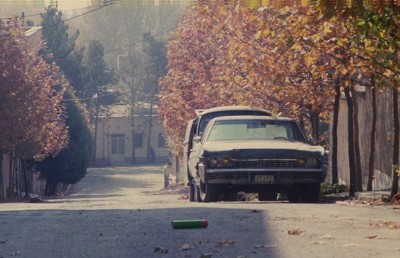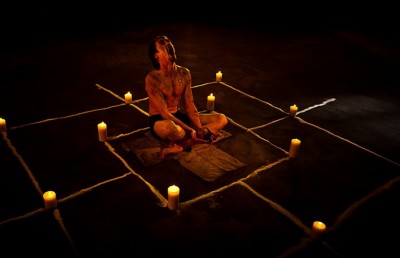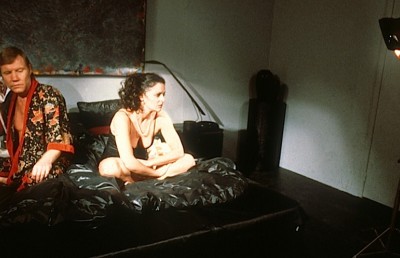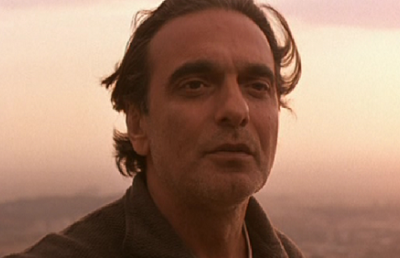Corridors that Whisper Dark Secrets
An Interview with Director Park Ki-Hyung

Whispering Corridors (1998) by director Park Ki-Hyung is at the forefront of a recent surge in popular genre-based cinema in the Republic of Korea. Precipitated by the box-office fantasy-horror hit of 1997 The Gingko Bed/Eunhang Namoo Chimdae (Kang, Je-Kyu), Whispering Corridors was the 7th highest grossing film at the 1998 Korean box-office (third Korean film behind The Letter/Pyun-Ji and A Promise). This recent explosion of popular genre films in Korea is largely a by-product of the transition from a series of military governments to the first elected civilian government in 1993. The consequent deregulation of the Korean film industry (loosening of censorship, changes in the quota system, etc.) resulted in a cultural climate of liberalisation that allowed for a range of films that includes the popular along with the arthouse. Whispering Corridors is one of the first of such popular films that manages to entertain while engaging in strong social commentary. Director Park Ki-Hyung uses a stylish, atmospheric ghost story set in a girls high school to deal with the reality of the Korean education system. The visually elegant film takes place at the fictitious Jookran Girls High School, where discipline and conformity is the rule of the day. Ostensibly a supernatural narrative about a ghost from the school’s haunted past that possesses students to kill, Whispering Corridors touches on teen suicide, the suppression of individual creativity, and authoritarianism. The film opens with an apparent suicide by hanging of a teacher nicknamed ‘Old Fox.’ As the narrative unfolds (through flashbacks) we learn that the death of Old Fox (and others) has been caused by the ghost of a former student named Jin-Ju, who fell prey to the pressures of school life and committed suicide some ten years earlier. In effect, Park Ki-Hyung uses the mechanics of the horror film to represent the terror of the Korean high school experience (the social pressures to succeed, peer pressure, rigorous discipline, teacher’s physical abuse, etc.). With a 2-month shooting schedule and a $500,00 US budget, Whispering Corridors has demonstrated that domestic products can hold their own against foreign films in the Korean marketplace. The success of Whispering Corridors (it has been seen by over 2 millon spectators) has been followed by a slew of popular Korean genre hits that include the action film Swiri (1998, Kang Je-Kyu) the black comedies The Quiet Family/Joyonghan Gajok (Kim Ji-Woon, 1998), Attack the Gas Station/Juyuso Seup Gyeok Sageon (Kim Sang-Jin, 1999), Barking Dogs Never Bite/ Peulrandaseu-ui Gae (Bong Joon-Hu, 2000), and The Foul King (Kim Ji-Woon, 2000), and the horror film The Ring Virus/Vaireoseu ‘Ring’ (Kim Dong-Bin, 1999). Park Ki-Hyung was invited as a guest to present Whispering Corridors at Montreal’s Fantasia 1999 Film Festival (July 23-August 15). The authors thank the Fantasia Film Festival (president Pierre Corbeil and programmers Julien Fonfrede, Martin Sauvageau, Mitch Davis, and Karim Hussain), Mi-Jeong Lee, and interpreter Jenny Ahn for making this interview possible.
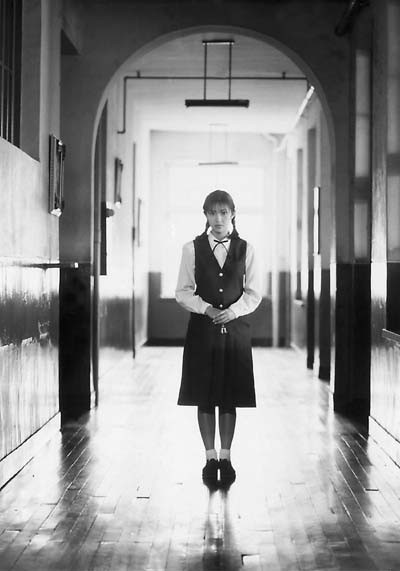
DT: Since there is not a strong tradition of horror films in Korea, what made you choose the horror genre for your first film. Did you perhaps find it easier to tell the strong social message through the horror film?
PK: I think there are two types of films: those where you start with a bright view and end on a bright view; and those where you start on the dark side and move toward the bright side. I think the horror film is the second type. By including the social criticism and pointing out the social problems in the educational institution, I thought the impact would be stronger and involve the audience more if I took the second approach, that is start out with a dark view and move toward a clearer viewer of the problems and issues.
PR: With the Great Pretenders (1996, 36 min.) you were experimenting with suspense and mystery, and then at the end of the film with more horror imagery. Did you use that film as practice to work with similar stylistic devices in the feature film? And a second question. There is not much graphic violence in Whispering Corridors. Did you deliberately avoid showing graphic horror, and are you more interested in suggesting horror or fantasy rather than showing it directly?
PK: For the first part of the question, yes, I did use the Great Pretenders as a primer to explore creating mood and using special effects. I think the way I am using the horror movie is not as a goal but as a means of getting the message to the audience, and because of that the editing became more important in showing us glimpses or giving us the impression of violence.
DT: The murder of the “Mad Dog” teacher character was filmed in a more traditional horror film style, with the slow build-up to the only really graphic depiction of violence, with the stabbing in the stomach and bleeding. Were you influenced at all by other horror directors? For instance, that scene made me think of Dario Argento? Was that an influence or was it purely coincidental?
PK: I do not see myself as being influenced by any specific Italian horror directors. It is more a question of that being a horror film convention used by many directors, slowly building tension until the end of a scene.
PR: I know Japanese films have been banned in Korea. But I understand that Korean directors have seen Japanese films. And there is an unfortunate tendency in Japanese films for girls in school uniforms to be exploited in a sexually explicit way. I was very pleased in this film that the girls were not exploited this way. I remember even the film, Birth of the Wizard (1996), directed by a Japanese woman (Shimako Sato), but which was still very exploitative. Was that a deliberate choice, to avoid exploiting girls? And is this part of the reason why the film was so successful with young female audiences in Korea?
PK: Yes it was a conscious decision to avoid those types of scenes, due to other specific reasons, but I thought it would also harm the commercial potential as well. Although we avoid those scenes I do not think it lessens the horror or the message.
DT: In terms of the plot, it may be a silly point, but we noticed that many of the girls wore their hair in a pony tail and some straight, and the ghost also changes her hair. Does that relate to what year a student is in school or does it have any other relevancy?
PK: No. It is just a question of appearing neat, which is how the teachers want them to look. These girls have two choices in how they wear their hair: cut it really short or long but in a ponytail to keep it neat. It is the only freedom they have!
PR: On the question of violence in school, with teachers beating students. Again this is something that requires a longer discussion, but I will try to keep it simple. Do you think this violence comes from the tradition of Japanese colonialism, and that there is an understanding of this in Korea? So is there a political element to the physical violence and drawing attention to it?
DT: To add to that. I imagine this acceptance of physical abuse in school does not just start in the school system, but goes back farther. The family is also, in a sense, complicit. And then you have to ask, just how far back does this problem go, of accepting physical abuse?
PK: I do not see a direct link to Japan’s colonialism. I personally think that a teacher-student relationship is a power game, with one a victim and one a master. So the master has the power to do anything, and the victim has no choice but to be subservient, to follow. I do not have a positive outlook on the Korean educational system. Which is why I did not like school!
PR: Colonialism is something I have studied and have seen in other contexts, and one of the very bad effects of colonialism is this abuse of power. I think, in my experience, it is worse in countries that have been colonized than in others. I was raised in England, working class, and growing up in England I was beaten by teachers in school. So in England it is involved with the class system. And what I understand is that the colonial system works within England as well as in its colonies. But this is a long discussion. Which is why I am interested in it, and I thought to tell you.
DT: This is more a comment than a question. What I found very interesting and perhaps progressive in terms of your film’s politics, if you compare it to American horror films, is the sense that it is the system that is being attacked. For example, you have the character of the teacher who was a former student, Eun-Young. But once a teacher the students try to kill her. Whereas in an American film the context would be that the system is good and the individual is corrupt. Eliminate the individual and the system is fine. But here you have a character who appears to be a good person, she tries to be a good teacher, but she still becomes a victim because once part of that system you will inevitably become bad or corrupted. I thought that was a very strong political statement the film was making. Now a question. I know the film has caused a lot of controversy and debates on the Korean education system. How much has that helped the box-office?
PK: It is hard to say. There have been about 2 million viewers in Korea for this film so far. I would say maybe half, or 1 million, saw it because they were curious, they may have seen the advertising and the news concerning the issues. Among the 2 million, students make up about 30%.
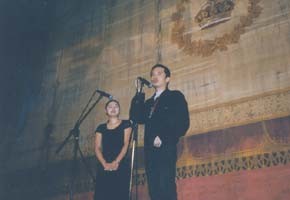
Park Ki-Hyung introduces Whispering Corridors to the Imperial crowd.(poto source from Donato Totaro)
PR: I was wondering, was the co-screenwriter of the film a woman?
PK: Yes
PR: I am obviously not a woman, but it seemed to me that the film had a really strong feminine sensibility. In part, did that come from the collaboration?
PK: In fact, she really did not have that much impact on the script. But I had students read the script and they gave me advice and suggestions regarding the details of student life.
DT: In terms of the film’s style, the representation of the ghost is quite realistic. Was there ever the possibility of making the appearance of the ghost more traditional, that is supernatural, or non-human? Or was it a budgetary consideration?
PK: It was not for any budgetary considerations. It was more in the belief that keeping the ghost more realistic made it more frightening, and would bring out a stronger human, emotional response.
DT: In terms of the emotions, I felt that the final two scenes signaled a shift in tone, especially the scene where the teacher attempts to convince the ghost to change her ways. It becomes more didactic in terms of its social criticism. Is that a tradition perhaps in Korean storytelling, to have that type of conclusion?
PK: No, I do not see it as belonging to any Korean tradition. It was more a question of shifting out of the horror film mode to give an explanation for the causes of why the ghost is killing. That may be a difference, I think, between the Western and Asian style horror movie. It is not a question of making the ghost evil or diabolical, but that she had real, concrete and emotional reasons for her actions.
PR: Do you feel that your work is influenced at all by other Korean film directors?
PK: I like the films of Kim Ki-Young. The Korean horror genre dates back to around the 1960’s and Kim Ki-Young is the one who made most of the horror films in that period. In the 1970’s and 1980’s because of commercial reasons, horror films were abandoned. Because the horror genre was seen as non-profitable, directors would not even think about making them. In the 1990’s the genre made a comeback with many new directors.
DT: Since it is such a popular film, have there been any repercussions, have there been other films made similar to Whispering Corridors? Or other directors trying to capitalize by making horror films with social criticism? And what are your next projects? Do you want to continue working in the genre?
PK: After the success of Whispering Corridors many producers have changed their mind concerning horror films. As I said, it was not seen by producers as a commercially viable genre in the 1970’s and 1980’s. And there are many new directors making or about to make horror films, which is why I do not want to make another one! My next project is more of a love story.[ed. Park Ki-Hyung’s latest film, entitled Secret Tears is presently doing the festival circuit.]
DT/PR: Well, thank you very much and continued success in your future filmmaking projects.




